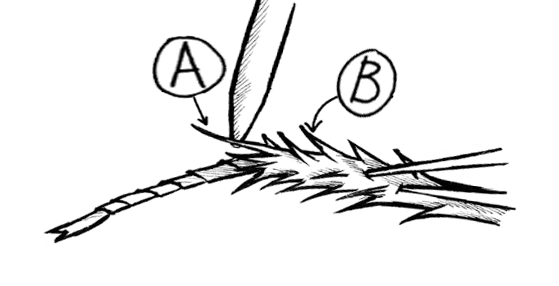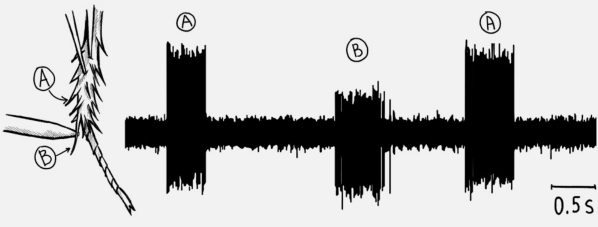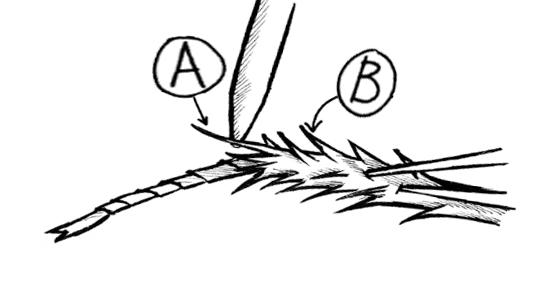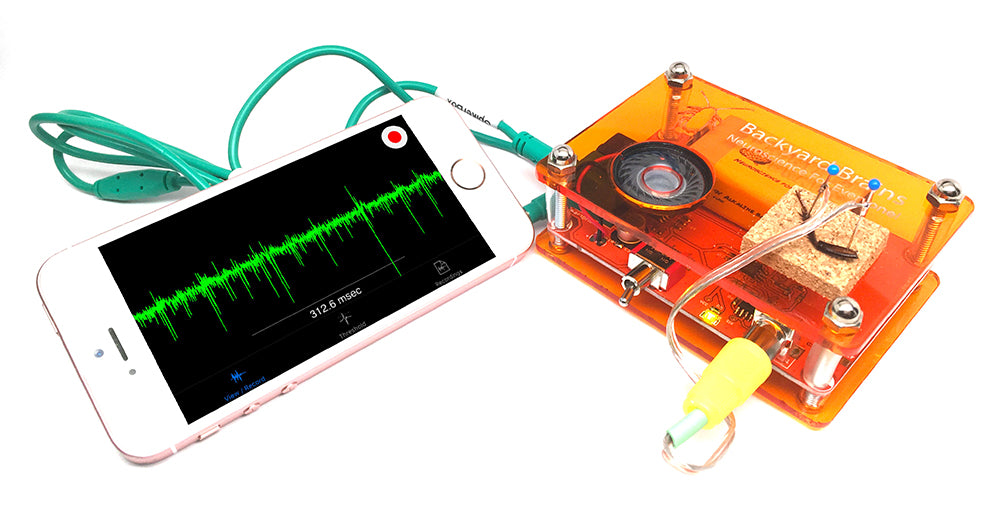
Experiment: Somatotopy

Touch different barbs on a cockroach leg and watch each one produce its own spike pattern. Discover how the nervous system maps where a stimulus occurs.
About experiment
What Will You Learn?
- How neurons encode touch from different body parts.
- Why spikes from one neuron are identical in size and shape.
- The principle of somatotopy—mapping the body in the brain.
Background
Each sensory neuron fires a stereotyped spike, but spikes from neighbouring neurons can differ slightly. By probing individual barbs you will see unique patterns that the cockroach brain uses to locate a stimulus—just as our own somatosensory cortex does.
Experiment

Stimulating Individual Barbs
Procedure
- Mount a cockroach leg and connect two close pins to your SpikerBox.
- With a toothpick, tap one barb until you hear a clear burst of spikes. Record the waveform.
- Test several other barbs. Note that spikes from one barb are identical each time, while spikes from different barbs vary in height or shape.
Observation
Consistent waveforms from a single barb show that one neuron is firing. Different waveforms reveal activity from other neurons—your first glimpse of a sensory map.

Understanding Somatotopy
Switch between barbs and compare spike patterns. Each pattern represents a specific location on the leg, letting the cockroach brain know where it was touched. Humans use the same idea: signals from skin receptors travel to the primary somatosensory cortex, arranged as a body map with hands and lips occupying the largest area.
What Did You Learn?
You confirmed that neurons code location with identity, not spike size, and that somatotopy allows a brain—cockroach or human—to tell whether a stimulus hit a finger, foot or face. How might other animals use similar maps?
What do you need?
-
Related Products



